Minnesota is nice extends to never warning tourists about the state’s most disappointing attractions.
Locals smile politely while visitors waste entire vacation days on roadside oddities.
The conspiracy of silence around these tourist traps runs deeper than Lake Superior.
You’re better off staying home and looking at photos online.
At least then you won’t spend $50 on parking to see a big fake fish.
1. Mall of America, Minnesota
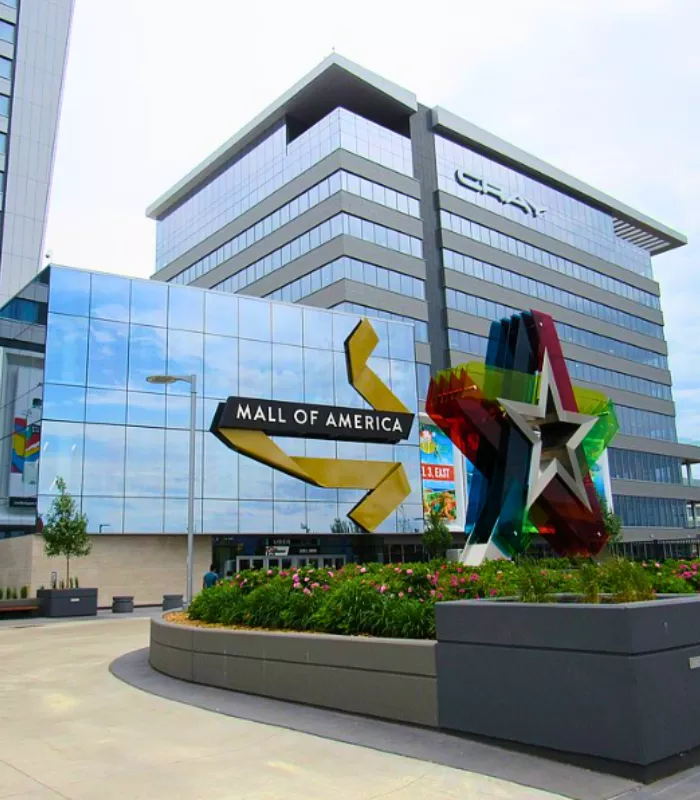
The Mall of America in Bloomington attracts 40 million visitors every year. That’s more people than the entire population of California.
But here’s the catch – it’s basically just a really big mall with chain stores you probably have near your hometown.
The biggest draws come with hefty price tags. You’ll pay $50 for a day at Nickelodeon Universe, around $24 at the aquarium, and $28 per person for the Crayola Experience.
Why It’s On This List: Multiple surveys have named it Minnesota’s most boring and overrated tourist trap, with visitors calling it “4.3 miles of consumerist America.”
2. Spamtown USA, Austin

Austin, Minnesota calls itself Spamtown USA and built an entire museum around the canned meat product. The SPAM Museum opened in 2001 and celebrates everything about this processed pork shoulder.
You can learn about SPAM’s history during World War II and see vintage advertisements. But here’s the deal – it’s essentially a corporate marketing experience disguised as a museum.
The novelty wears off pretty quickly for most visitors. You’re better off just buying a can at the grocery store if you’re curious about SPAM.
Why It’s On This List: It’s a one-trick pony that feels more like an extended commercial than a legitimate cultural attraction.
3. World’s Largest Ball of Twine, Darwin
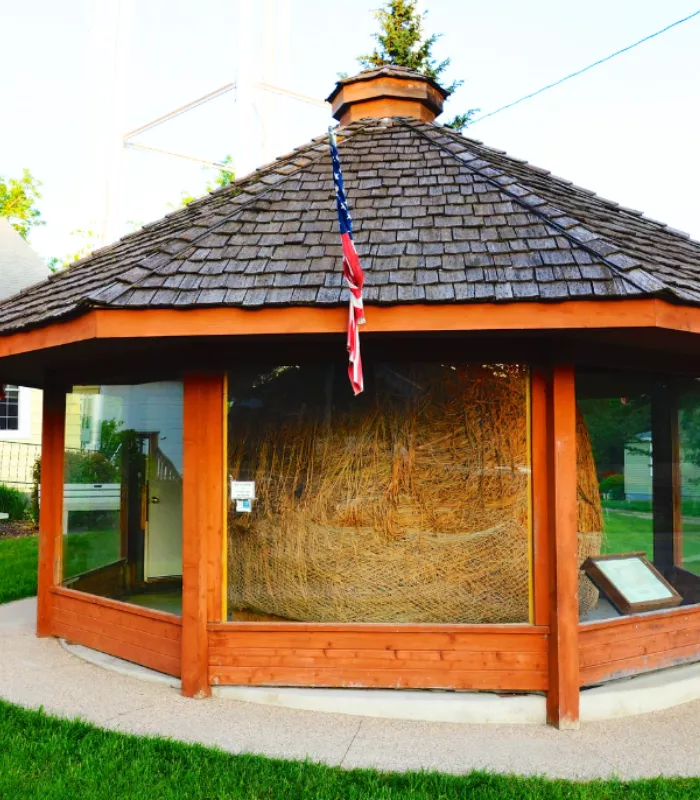
Francis Johnson spent 29 years rolling twine into a ball that weighs 17,400 pounds. It sits in a gazebo in tiny Darwin, Minnesota, population 350.
The ball measures 12 feet in diameter and required a crane to move it. Johnson started the project in 1950 and worked on it until his death in 1989.
But here’s the catch – you’ll drive hours out of your way to see a big ball of string for about 30 seconds. That’s it. There’s literally nothing else to do in Darwin.
Why It’s On This List: It’s the definition of a roadside oddity that doesn’t justify the detour unless you’re already driving through central Minnesota.
4. Paul Bunyan and Babe Statues, Bemidji
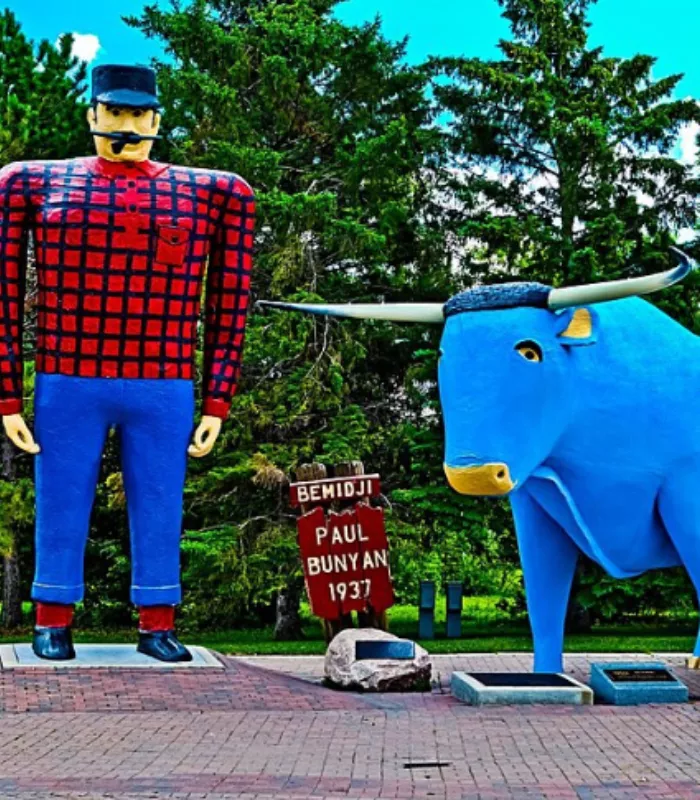
The 18-foot-tall Paul Bunyan statue and his blue ox Babe have stood in Bemidji since 1937. They’re probably the most photographed statues in Minnesota.
Thousands of tourists stop every year to take selfies with the giant lumberjack. The statues were built to promote tourism during the Great Depression.
But here’s the deal – once you’ve taken your photo, there’s not much else to see. The whole experience takes about five minutes unless you really love giant fiberglass statues.
Why It’s On This List: It’s a classic example of roadside Americana that’s more about the Instagram photo than any real educational or entertainment value.
5. Jolly Green Giant Statue, Blue Earth
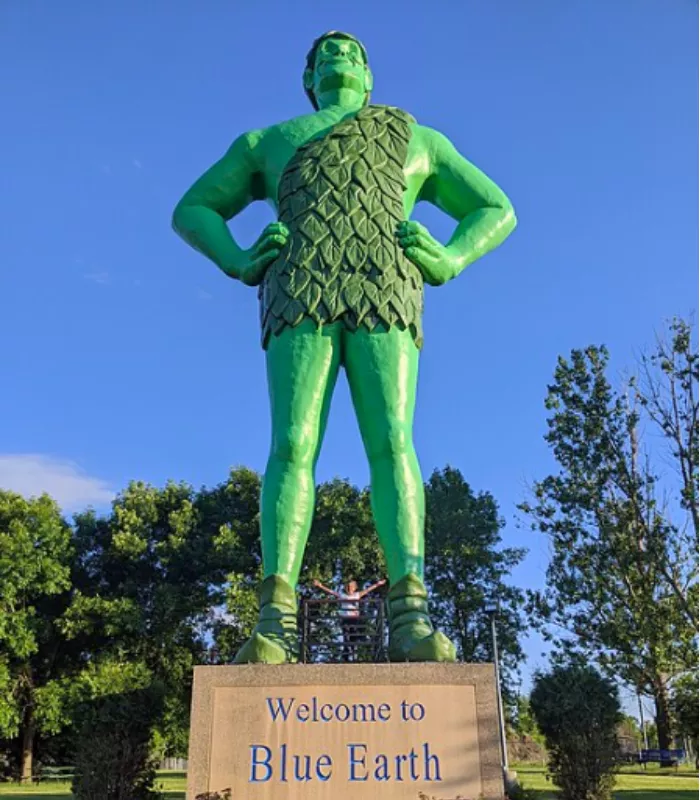
Blue Earth, Minnesota erected a 55-foot-tall Jolly Green Giant statue in 1979. The fiberglass giant stands in a small park right off Interstate 90.
The statue was built to honor the Green Giant Company, which once had a canning plant in the area. It’s become a popular photo stop for families driving across southern Minnesota.
I made a classic mistake and drove 20 minutes out of my way to see it. You’re looking at a big green statue for maybe two minutes, then wondering why you bothered.
Why It’s On This List: Like most roadside giants, it’s a quick photo opportunity that doesn’t offer any real substance or lasting memories.
6. Paisley Park, Chanhassen
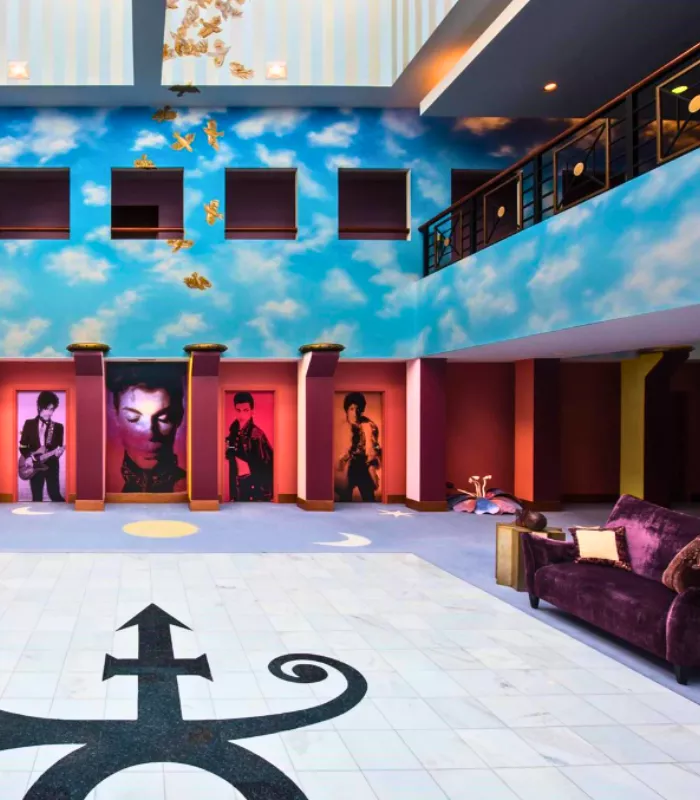
Prince’s Paisley Park studio offers tours of the late musician’s recording complex. The tours cost around $100 per person and last about 70 minutes.
You’ll see Prince’s recording studios, wardrobe, and some of his instruments. The facility opened for tours in 2016, shortly after Prince’s death.
But here’s the catch – the tours feel rushed and overly commercialized. Many visitors say it lacks the intimate connection to Prince they were hoping for.
Why It’s On This List: The high price point and corporate feel disappoint many Prince fans who expect a more personal tribute to the Purple One.
7. Judy Garland Museum, Grand Rapids
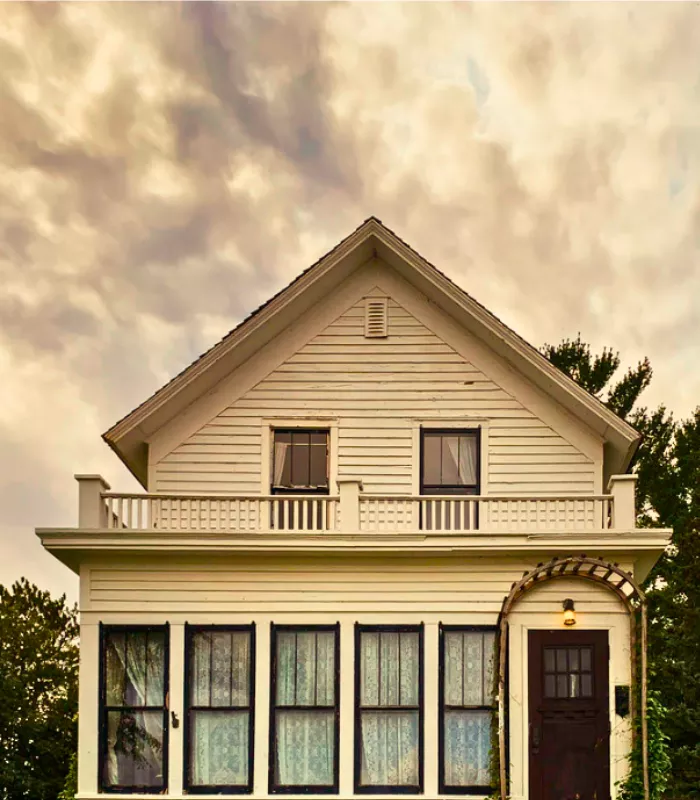
The Judy Garland Museum sits in the house where the “Wizard of Oz” star was born in 1922. The small museum displays memorabilia from Garland’s life and career.
You can see some of her personal items and learn about her childhood in Minnesota. The museum also hosts an annual Judy Garland Festival each summer.
That’s why many visitors feel let down by the limited exhibits and small size. You’re better off watching “The Wizard of Oz” at home for a more meaningful Judy Garland experience.
Why It’s On This List: The museum is tiny and doesn’t have enough authentic artifacts to justify the trip for most casual fans.
8. Spam Museum Gift Shop Overpricing, Austin

The SPAM Museum gift shop takes souvenir pricing to ridiculous levels. A simple SPAM-themed t-shirt costs $25, and novelty items run even higher.
You can buy SPAM-flavored lip balm, SPAM socks, and SPAM Christmas ornaments. The gift shop is often more crowded than the actual museum exhibits.
But here’s the deal – you’re paying premium prices for cheaply made merchandise. Most of the items are manufactured overseas and have little connection to Austin, Minnesota.
Why It’s On This List: The gift shop exemplifies tourist trap pricing, charging premium rates for low-quality souvenirs that cost pennies to produce.
9. Largest Candy Store, Jordan
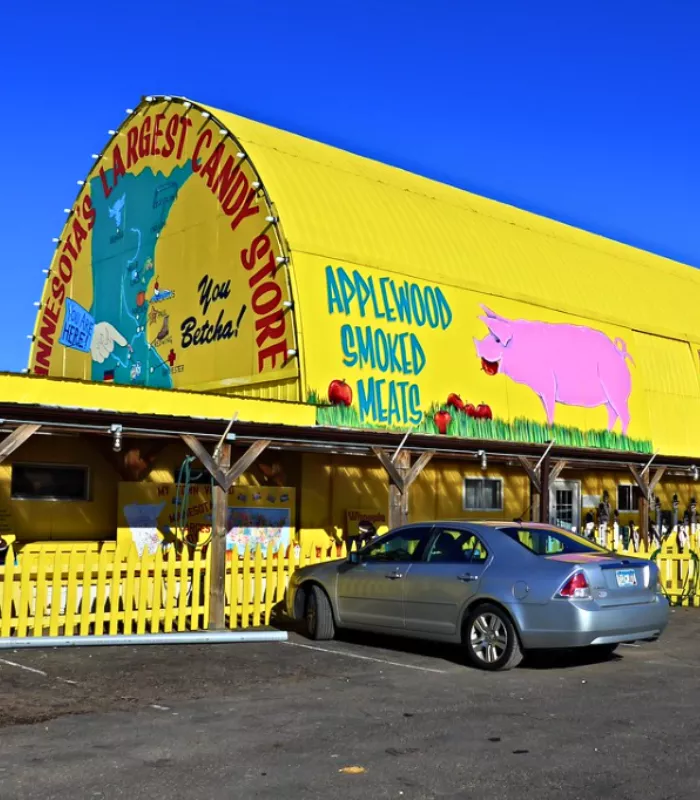
Minnesota’s Largest Candy Store claims to have the biggest selection of sweets in the state. The warehouse-sized store sits along Highway 169 in Jordan.
They stock thousands of different candies, from nostalgic favorites to international treats. The store also sells Minnesota-made products and novelty items.
I made a classic mistake thinking this would be a quick stop. You’ll spend way more money than planned, and most of the candy is overpriced compared to regular stores.
Why It’s On This List: It’s designed to separate tourists from their money through impulse buying and inflated prices on common candy brands.
10. Kensington Runestone Museum, Alexandria
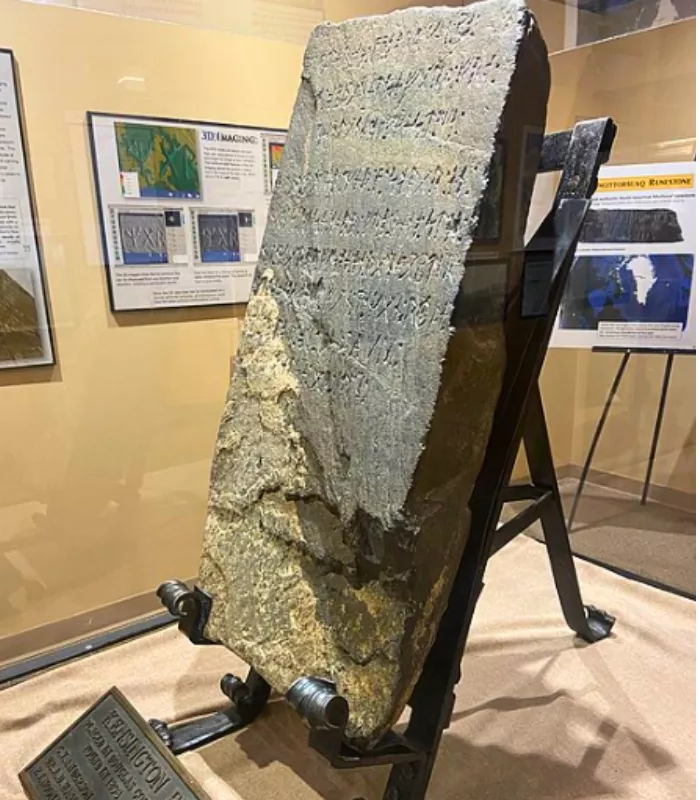
The Kensington Runestone Museum displays a controversial stone tablet that some claim proves Vikings visited Minnesota in 1362. Most scholars consider it a hoax.
The museum presents the runestone as authentic despite overwhelming evidence it’s a fake created in the 1890s. They charge admission to see what’s essentially a fraudulent artifact.
But here’s the catch – you’re paying to see something that’s been thoroughly debunked by historians and archaeologists. You’re better off reading about real Viking history online.
Why It’s On This List: The museum continues to promote a discredited hoax as historical fact, misleading visitors about Minnesota’s actual history.
11. Glockenspiel, New Ulm
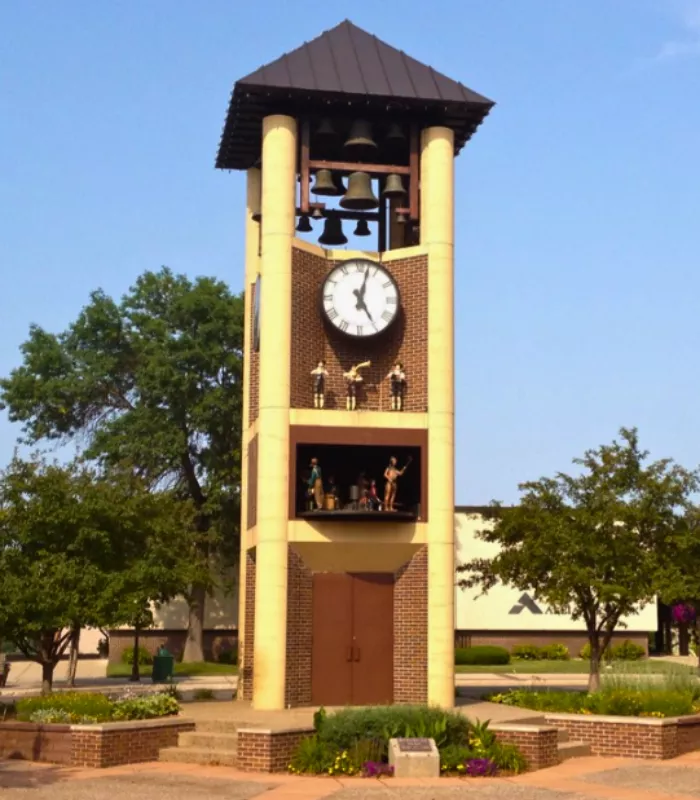
The Glockenspiel in New Ulm plays a 15-minute musical performance three times daily from its 45-foot tower. The carillon features 37 bells and rotating figurines that tell the story of German immigration to Minnesota.
Built in 1980, it was designed to celebrate the city’s German heritage. Tourists often wait around for the next performance, which happens at noon, 3 PM, and 5 PM.
But here’s the deal – you’ll stand around for potentially hours just to watch a brief mechanical show. The figurines move slowly and the music gets repetitive quickly.
Why It’s On This List: The long wait times between performances and brief duration make it a poor use of vacation time for most visitors.
12. Franconia Sculpture Park, Shafer
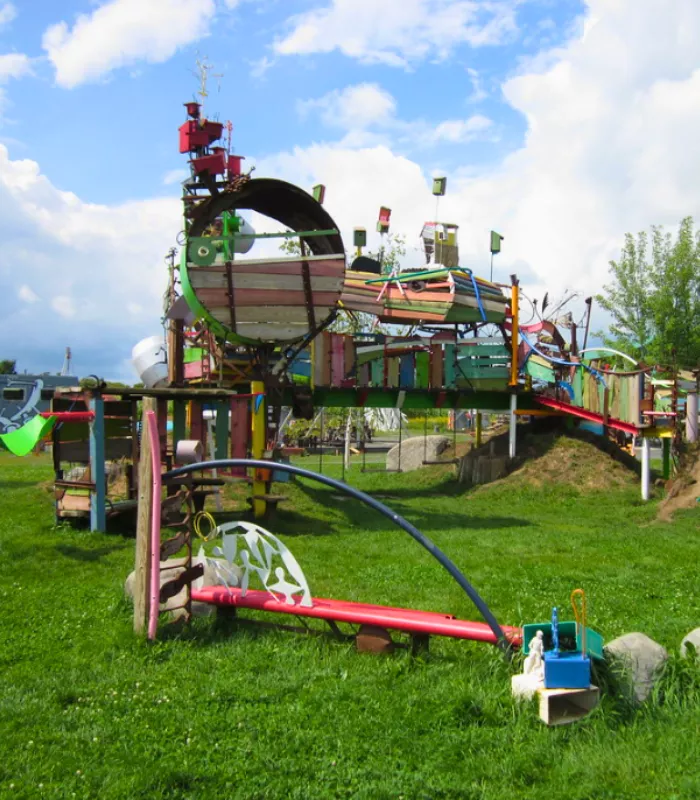
Franconia Sculpture Park sprawls across 43 acres with over 100 large-scale sculptures created by various artists. The outdoor museum charges $10 for adults and promotes itself as a unique cultural experience.
Many sculptures are abstract and difficult to interpret without art background knowledge. The park hosts artist residencies and rotating exhibitions throughout the year.
That’s why casual visitors often feel confused and underwhelmed by the experience. You’re better off visiting a traditional art museum with clear explanations and context.
Why It’s On This List: The abstract nature of most sculptures leaves many visitors scratching their heads and feeling like they wasted their admission fee.
13. World’s Largest Pelican, Pelican Rapids

Pelican Rapids erected a 15-foot-tall fiberglass pelican statue in 1957 to promote tourism. The white bird sits in Pelican Park and has become the town’s main claim to fame.
The statue was restored in 2007 after decades of weather damage. Local businesses sell pelican-themed merchandise and the town hosts an annual Pelican Festival.
But here’s the catch – it’s another giant roadside attraction that takes 30 seconds to see. There’s no educational component or interesting backstory beyond basic town promotion.
Why It’s On This List: Like most oversized animal statues, it’s a brief photo stop that doesn’t justify going out of your way to visit.
14. Spam Museum Interactive Exhibits, Austin

The SPAM Museum’s interactive exhibits let visitors try their hand at canning SPAM and learn about meat processing. These hands-on displays are supposed to make the experience more engaging.
You can watch videos about SPAM’s role in World War II and see vintage advertising campaigns. The museum also features a mock grocery store aisle filled with SPAM products.
I made a classic mistake thinking the interactive elements would be fun. Most are broken half the time, and the ones that work are pretty boring for adults.
Why It’s On This List: The interactive exhibits feel cheap and gimmicky, designed more for young children than the adult tourists who typically visit.
15. Laura Ingalls Wilder Museum, Walnut Grove
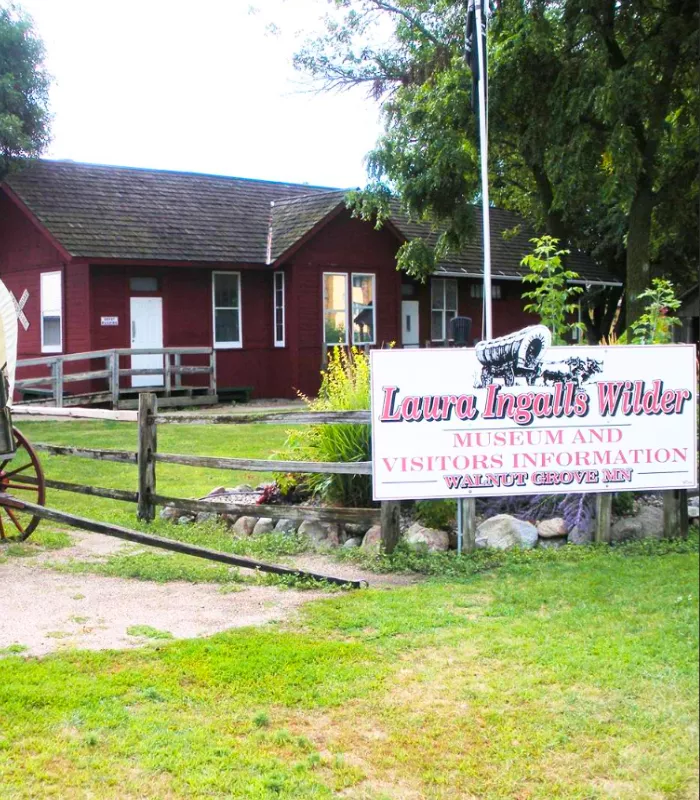
Walnut Grove claims to be the “Little House on the Prairie” town, though Laura Ingalls Wilder only lived there briefly as a child. The museum displays some period artifacts and recreated pioneer items.
The town hosts an annual Laura Ingalls Wilder Pageant each summer. Visitors can tour a replica dugout home and see where the Ingalls family supposedly lived.
But here’s the deal – most of the “historical” sites are recreations built for tourism. You’re better off reading the actual books or visiting the more authentic Wilder sites in other states.
Why It’s On This List: The connection to Laura Ingalls Wilder is tenuous at best, and most exhibits are modern recreations rather than authentic historical artifacts.
16. Largest Loon, Vergas
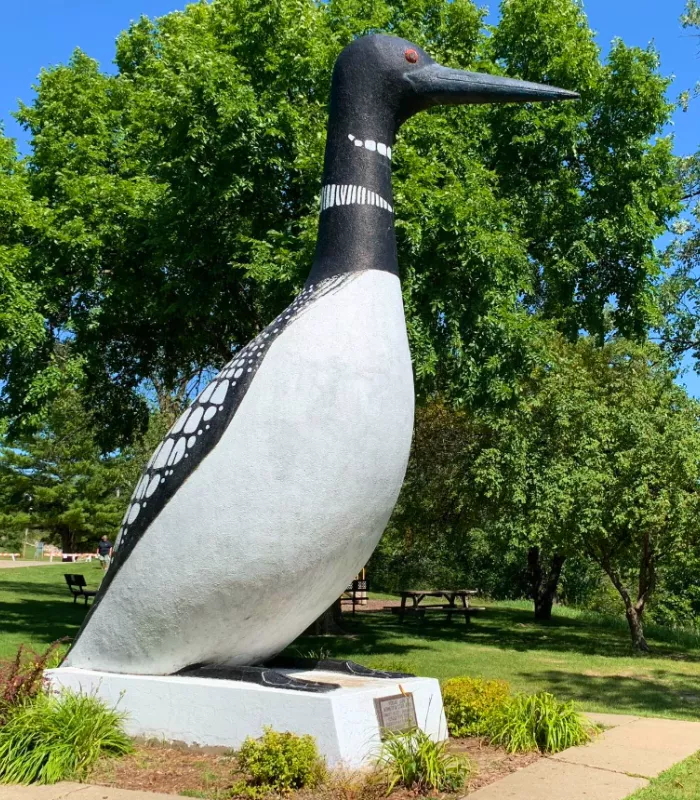
Vergas, Minnesota built a 20-foot-tall loon statue in 1963 to celebrate the state bird. The fiberglass loon sits on the shore of Long Lake and weighs about 2,000 pounds.
The statue was restored in 2002 with community fundraising efforts. It’s painted in the distinctive black and white pattern of the common loon.
That’s why most visitors feel disappointed after driving to see it. You’ll spend more time driving there than actually looking at the statue.
Why It’s On This List: It’s yet another oversized roadside attraction that offers minimal entertainment value for the time investment required to visit.
17. Sinclair Lewis Boyhood Home, Sauk Centre
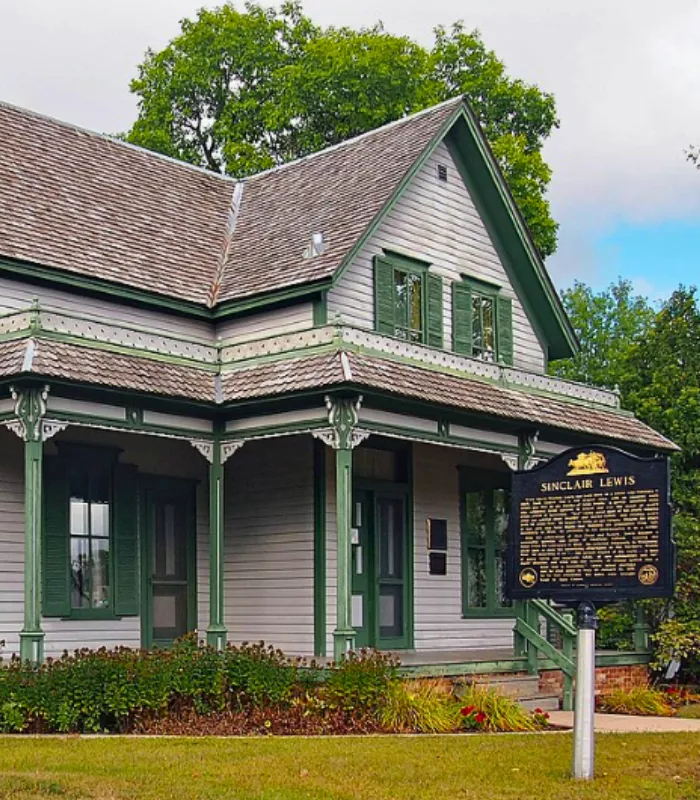
The Sinclair Lewis Boyhood Home in Sauk Centre preserves the childhood residence of America’s first Nobel Prize winner in Literature. The house museum displays period furnishings and Lewis memorabilia.
Lewis wrote “Main Street” and other novels that criticized small-town American life. The house offers guided tours during summer months for a small admission fee.
But here’s the catch – unless you’re a serious literature buff, the house feels like any other old Victorian home. Most visitors under 60 have never heard of Sinclair Lewis.
Why It’s On This List: The museum appeals to a very narrow audience and doesn’t provide enough context for casual visitors to appreciate Lewis’s significance.
18. World’s Largest Tiger Muskie, Nevis
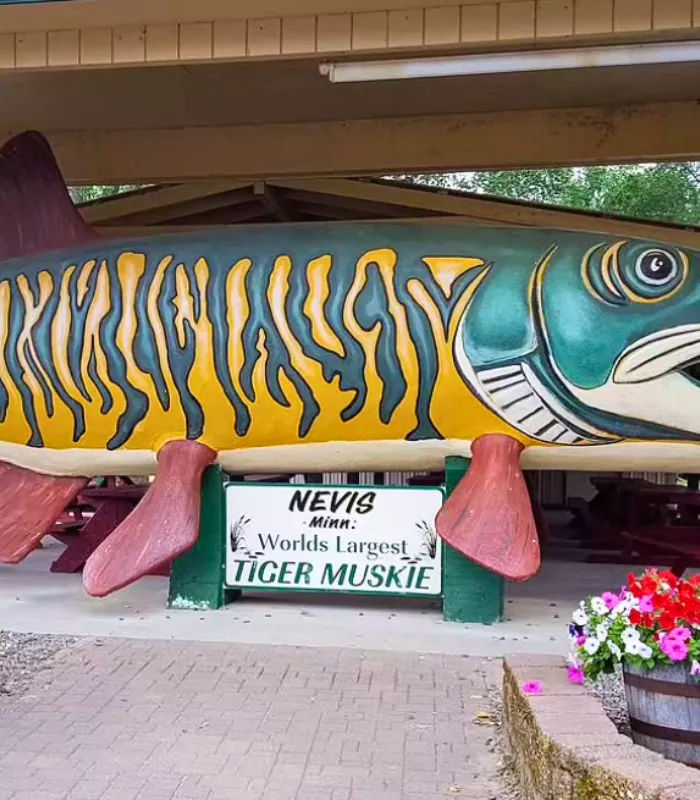
Nevis erected a 40-foot-long fiberglass tiger muskie statue to promote fishing tourism. The giant fish statue sits along Highway 34 and weighs several tons.
The statue was built in the 1990s when the town wanted to attract more anglers to the area lakes. Tiger muskies are popular game fish in northern Minnesota waters.
I made a classic mistake thinking there would be more to see in Nevis. You’re looking at a big fake fish for about one minute, then wondering what to do next.
Why It’s On This List: Like other roadside giants, it’s a quick photo opportunity that doesn’t offer any real educational value or lasting entertainment.
19. Soudan Underground Mine State Park Tours, Soudan
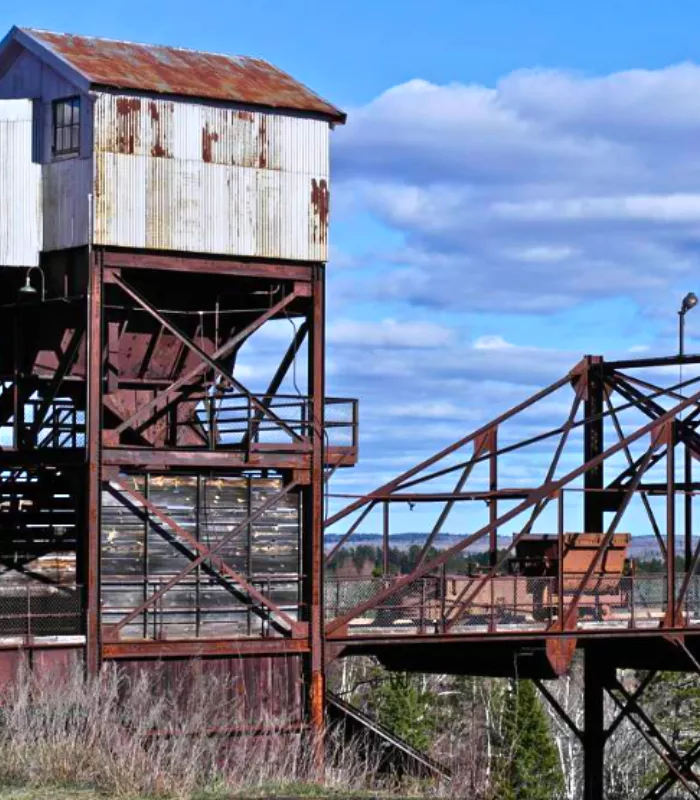
Soudan Underground Mine offers tours 2,400 feet below ground in Minnesota’s deepest mine shaft. The 90-minute tours cost around $15 and require advance reservations during peak season.
You’ll descend in a cage elevator and learn about iron ore mining history. The mine operated from 1882 to 1962 and produced high-grade iron ore.
But here’s the deal – the tours are often oversold and feel rushed. Many visitors complain about claustrophobic conditions and limited time to explore underground.
Why It’s On This List: The overcrowded tours and high demand make it difficult to enjoy the experience, especially for visitors with mobility issues or claustrophobia.
20. Largest Prairie Chicken, Rothsay
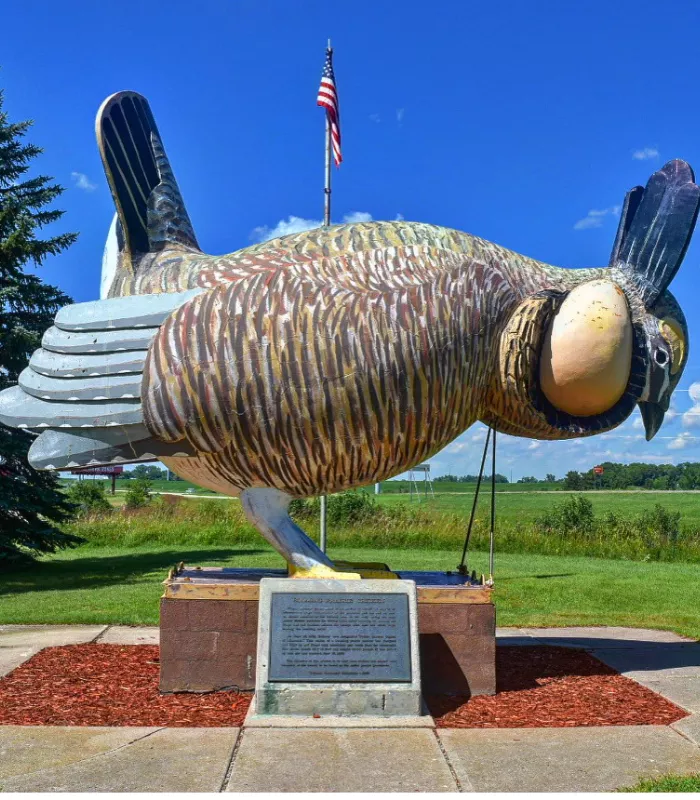
Rothsay built a 13-foot-tall prairie chicken statue in 1976 to honor the nearly extinct bird species. The fiberglass statue stands in a small roadside park along Highway 9.
Prairie chickens were once common in western Minnesota but habitat loss reduced their numbers dramatically. The statue was meant to raise awareness about conservation.
That’s why the irony is lost on most tourists who just want a quick photo. You’re better off visiting an actual wildlife refuge if you want to learn about prairie chickens.
Why It’s On This List: It’s the final entry in Minnesota’s collection of oversized roadside attractions that promise more than they deliver to curious travelers.